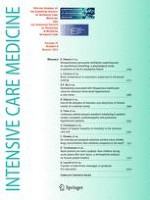Published in:

01-08-2011 | Original
Do centrally pre-prepared solutions achieve more reliable drug concentrations than solutions prepared on the ward?
Authors:
Carola Dehmel, Stephan A. Braune, Georg Kreymann, Michael Baehr, Claudia Langebrake, Heike Hilgarth, Axel Nierhaus, Dorothee C. Dartsch, Stefan Kluge
Published in:
Intensive Care Medicine
|
Issue 8/2011
Login to get access
Abstract
Purpose
To compare the concentration conformity of infusion solutions manually prepared on intensive care units (ICU) with solutions from pharmacy-based, automated production.
Methods
A prospective observational study conducted in a university hospital in Germany. Drug concentrations of 100 standardised infusion solutions manually prepared in the ICU and 100 matching solutions from automated production containing amiodarone, noradrenaline or hydrocortisone were measured by high-performance liquid chromatography analysis. Deviations from stated concentrations were calculated, and the quality of achieved concentration conformity of the two production methods was compared.
Results
Actual concentrations of 53% of the manually prepared and 16% of the machine-made solutions deviated by >5% above or below the stated concentration. A deviation of >10% was measured in 22% of the manually prepared samples and in 5% of samples from automated production. Of the manually prepared solutions, 15% deviated by >15% above or below the intended concentration. The mean concentration of the manually prepared solutions was 97.2% (SD 12.7%, range 45–129%) and of the machine-made solutions was 101.1% (SD 4.3%, range 90–114%) of the target concentration (p < 0.01).
Conclusions
In this preliminary study, ward-based, manually prepared infusion solutions showed clinically relevant deviations in concentration conformity significantly more often than pharmacy-prepared, machine-made solutions. Centralised, automated preparation of standardised infusion solutions may be an effective means to reduce this type of medication error. Further confirmatory studies in larger settings and under conditions of routine automated production are required.